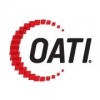Filter interviews by
Open Access Technology India UI Developer Interview Questions and Answers
9 Interview questions
JavaScript has some disadvantages that developers should be aware of.
JavaScript is an interpreted language, which can lead to slower performance compared to compiled languages.
JavaScript has limited support for multithreading, making it difficult to perform complex tasks efficiently.
JavaScript can be prone to security vulnerabilities, such as cross-site scripting (XSS) attacks.
JavaScript code can be difficult to m...
The figure tag is used to group images and their captions together, while the img tag is used to display a single image.
Figure tag is used to group images and their captions together.
Img tag is used to display a single image.
Figure tag can contain multiple images and text, while img tag is standalone.
Figure tag is often used for image galleries or diagrams.
Img tag is used for displaying a single image on a webpage...
Call, Apply, and Bind are methods in JavaScript used to manipulate the value of 'this' in a function.
Call: Invokes a function with a specified 'this' value and arguments provided individually.
Apply: Invokes a function with a specified 'this' value and arguments provided as an array.
Bind: Creates a new function with a specified 'this' value and arguments provided as a list.
Create 10 checkboxes in JavaScript and display the count of checked checkboxes below. Update count on unchecking.
Use JavaScript to create checkboxes
Add event listener to checkboxes to track changes
Update count of checked checkboxes on change
Display count below checkboxes
Closure is a function that has access to its own scope, the outer function's scope, and the global scope.
Closure allows a function to access variables from its outer function even after the outer function has finished executing.
It helps in creating private variables and functions in JavaScript.
Closures are created every time a function is created, and they store references to the variables in their lexical environ...
A breadcrumb is a navigation element that shows the user's current location within a website or application.
A breadcrumb typically appears horizontally at the top of a page or below the navigation bar.
It consists of a series of links, with each link representing a higher-level page or section.
The last link in the breadcrumb represents the current page or section and is often not clickable.
Breadcrumb navigation hel...
Ajax is a technique used to update parts of a web page without reloading the entire page.
Ajax stands for Asynchronous JavaScript and XML.
It allows for asynchronous communication between the client and server.
Ajax uses XMLHttpRequest object to send and receive data from the server.
It can update the content of a web page dynamically without refreshing the whole page.
Ajax is commonly used for creating interactive web...
Types of storage in HTML5 include localStorage, sessionStorage, and IndexedDB.
localStorage: stores data with no expiration date
sessionStorage: stores data for one session only
IndexedDB: stores large amounts of structured data
webCompliance rules are guidelines that ensure websites meet legal and regulatory requirements. webForm 2.0 is a web development framework.
webCompliance rules are used to ensure websites adhere to accessibility, privacy, and security standards.
These rules help websites avoid legal issues and provide a better user experience.
Examples of webCompliance rules include WCAG (Web Content Accessibility Guidelines) for acc...
Open Access Technology India UI Developer Interview Experiences
1 interview found
I applied via Company Website and was interviewed before Mar 2021. There was 1 interview round.
(9 Questions)
- Q1. Disadvantages of JavaScript
- Ans.
JavaScript has some disadvantages that developers should be aware of.
JavaScript is an interpreted language, which can lead to slower performance compared to compiled languages.
JavaScript has limited support for multithreading, making it difficult to perform complex tasks efficiently.
JavaScript can be prone to security vulnerabilities, such as cross-site scripting (XSS) attacks.
JavaScript code can be difficult to mainta...
- Q2. What is Ajax and How does ajax works
- Ans.
Ajax is a technique used to update parts of a web page without reloading the entire page.
Ajax stands for Asynchronous JavaScript and XML.
It allows for asynchronous communication between the client and server.
Ajax uses XMLHttpRequest object to send and receive data from the server.
It can update the content of a web page dynamically without refreshing the whole page.
Ajax is commonly used for creating interactive web appl...
- Q3. What is webCompliance rules and webForm 2.0
- Ans.
webCompliance rules are guidelines that ensure websites meet legal and regulatory requirements. webForm 2.0 is a web development framework.
webCompliance rules are used to ensure websites adhere to accessibility, privacy, and security standards.
These rules help websites avoid legal issues and provide a better user experience.
Examples of webCompliance rules include WCAG (Web Content Accessibility Guidelines) for accessib...
- Q4. Types of Storage in HTML5
- Ans.
Types of storage in HTML5 include localStorage, sessionStorage, and IndexedDB.
localStorage: stores data with no expiration date
sessionStorage: stores data for one session only
IndexedDB: stores large amounts of structured data
- Q5. Media Objects in Bootstarp, What is Breadcrumb
- Ans.
A breadcrumb is a navigation element that shows the user's current location within a website or application.
A breadcrumb typically appears horizontally at the top of a page or below the navigation bar.
It consists of a series of links, with each link representing a higher-level page or section.
The last link in the breadcrumb represents the current page or section and is often not clickable.
Breadcrumb navigation helps us...
- Q6. What is difference between Figure tag and Img tag.
- Ans.
The figure tag is used to group images and their captions together, while the img tag is used to display a single image.
Figure tag is used to group images and their captions together.
Img tag is used to display a single image.
Figure tag can contain multiple images and text, while img tag is standalone.
Figure tag is often used for image galleries or diagrams.
Img tag is used for displaying a single image on a webpage.
- Q7. Create 10 no. of Checkboxes in javascript and on-checked checkboxes count should be show at below. as you will un-check the checkbox count should also change. so means to say checked checkbox count should ...
- Q8. What is Call, Apply and Bind in javscript
- Ans.
Call, Apply, and Bind are methods in JavaScript used to manipulate the value of 'this' in a function.
Call: Invokes a function with a specified 'this' value and arguments provided individually.
Apply: Invokes a function with a specified 'this' value and arguments provided as an array.
Bind: Creates a new function with a specified 'this' value and arguments provided as a list.
- Q9. What is Closure in javascript
- Ans.
Closure is a function that has access to its own scope, the outer function's scope, and the global scope.
Closure allows a function to access variables from its outer function even after the outer function has finished executing.
It helps in creating private variables and functions in JavaScript.
Closures are created every time a function is created, and they store references to the variables in their lexical environment.
...
Interview Preparation Tips
Skills evaluated in this interview
Top trending discussions






Interview questions from similar companies

Software Developer Interview Questions & Answers
Ansys Software Private Limitedposted on 28 Jun 2024
I applied via Job Portal and was interviewed before Jun 2023. There was 1 interview round.
(1 Question)
- Q1. Write down the recursion tree for this code:
- Ans.
Recursion tree for a given code
Identify the base case of the recursion
Draw a tree structure with each recursive call as a node
Label each node with the input parameters and return values
Skills evaluated in this interview

I applied via LinkedIn and was interviewed in May 2024. There were 2 interview rounds.
(2 Questions)
- Q1. Tell me about yourself
- Ans.
I am a passionate software developer with experience in Java, Python, and web development.
Experienced in Java, Python, and web development technologies
Strong problem-solving skills
Team player with excellent communication skills
- Q2. Test English level
(2 Questions)
- Q1. Explain OOP concepts
- Ans.
OOP stands for Object-Oriented Programming, a programming paradigm based on the concept of objects.
OOP focuses on creating objects that contain data and methods to manipulate that data.
Encapsulation: Objects hide their internal state and require interaction through defined interfaces.
Inheritance: Objects can inherit attributes and methods from other objects.
Polymorphism: Objects can take on different forms or have mult...
- Q2. Questions related to previous experience
Interview Preparation Tips

I applied via Recruitment Consulltant and was interviewed in Nov 2024. There were 2 interview rounds.
(2 Questions)
- Q1. Tell us about your experience.
- Q2. In english, give me a feedback you received lately.
(2 Questions)
- Q1. Brief explanation of SOLID principles
- Q2. Ref vs out arguments
- Ans.
ref and out are C# keywords for passing arguments by reference, allowing methods to modify the original data.
ref requires the variable to be initialized before being passed. Example: 'int x = 10; SomeMethod(ref x);'
out does not require initialization before being passed. Example: 'int y; SomeMethod(out y);'
Both allow methods to modify the original variable, but ref is for existing data, while out is for returning new d...
Skills evaluated in this interview

Software Developer Interview Questions & Answers
Cyber Infrastructureposted on 26 Apr 2022
(1 Question)
- Q1. Based on c# ,oops and SQL server
(1 Question)
- Q1. Technical and director round
(1 Question)
- Q1. Salary discussion and negotiation
Interview Preparation Tips

Software Developer Interview Questions & Answers
Cyber Infrastructureposted on 29 Nov 2022

(1 Question)
- Q1. Tell me about yourself Tell me about your final year project Your family background
(1 Question)
- Q1. Tell me about yourself Class and object Constructor Polymorphism Multithreading Exception handling
Pattern program
Multithreading program
And overriding program
Interview Preparation Tips

Software Developer Interview Questions & Answers
Cyber Infrastructureposted on 13 Jan 2023
I applied via Naukri.com and was interviewed before Jan 2022. There was 1 interview round.
(2 Questions)
- Q1. Laravel based questions, badabase questions
- Q2. Database query joins , having cluuase javascript jQuery
Interview Preparation Tips

Software Developer Interview Questions & Answers
Cyber Infrastructureposted on 12 Jan 2024
I applied via Campus Placement and was interviewed in Dec 2023. There was 1 interview round.
(5 Questions)
- Q1. What is class what is object what is different between private protected and public and default
- Ans.
A class is a blueprint for creating objects, while an object is an instance of a class. Private, protected, public, and default are access modifiers in object-oriented programming.
A class is a template or blueprint that defines the properties and behaviors of objects.
An object is an instance of a class, created using the class blueprint.
Private access modifier restricts access to class members within the same class.
Pro...
- Q2. What is object ?
- Ans.
An object is a self-contained entity that consists of both data and behavior.
Objects are instances of classes in object-oriented programming.
They encapsulate data and provide methods to manipulate that data.
Objects can interact with each other through method calls and message passing.
Examples of objects include a car, a person, or a bank account.
- Q3. What is public?
- Ans.
Public is a keyword in programming languages that denotes the accessibility of a class, method, or variable.
Public is one of the access modifiers in object-oriented programming.
It allows the class, method, or variable to be accessed from any other class or package.
Public members are part of the public API of a software component.
Example: public class MyClass { ... }
Example: public void myMethod() { ... }
Example: public...
- Q4. What is private?
- Ans.
In programming, private is an access modifier that restricts the visibility of a class member to within its own class.
Private is used to encapsulate data and prevent direct access from outside the class.
Private members can only be accessed through public methods or properties.
Private variables are often used to store internal state or implementation details.
Private methods are used for internal logic and are not meant ...
- Q5. What is protected
- Ans.
protected is an access modifier in object-oriented programming that restricts access to members within the same package or subclasses.
protected is one of the four access modifiers in Java, along with public, private, and default.
Members declared as protected can be accessed within the same package or by subclasses.
Protected members are not accessible outside the package unless accessed through inheritance.
Example: prot...
Interview Preparation Tips
- OOPS
- Java
Skills evaluated in this interview

Software Developer Interview Questions & Answers
Cyber Infrastructureposted on 27 Feb 2024
I applied via Recruitment Consulltant and was interviewed before Feb 2023. There were 4 interview rounds.
That was conducted in my College and it was online assessment for aptitude
(1 Question)
- Q1. Difference between == and ===
- Ans.
The == operator checks for equality, while the === operator checks for strict equality (including data type).
The == operator only checks for equality of values, not data types.
The === operator checks for both equality of values and data types.
Example: 5 == '5' would return true, but 5 === '5' would return false.
(2 Questions)
- Q1. Describe your final year project
- Q2. What was your role in your final year project
(1 Question)
- Q1. Salary expectation
Interview Preparation Tips
Skills evaluated in this interview

(1 Question)
- Q1. What is your name
- Ans.
My name is John Smith.
Full name is John Smith
Common first and last name
Easy to remember and pronounce
Open Access Technology India Interview FAQs
Tell us how to improve this page.
Open Access Technology India Interviews By Designations
- Open Access Technology India Business Analyst Interview Questions
- Open Access Technology India UI Developer Interview Questions
- Open Access Technology India UI/UX Designer Interview Questions
- Open Access Technology India Software Engineer Interview Questions
- Open Access Technology India Software Developer Interview Questions
- Open Access Technology India DOT NET Developer Interview Questions
- Open Access Technology India QA Engineer Interview Questions
- Open Access Technology India Senior Group Leader Interview Questions
- Show more
Interview Questions for Popular Designations
Interview Questions from Similar Companies
Open Access Technology India UI Developer Reviews and Ratings
based on 1 review
Rating in categories
|
Software Developer
54
salaries
| ₹2.4 L/yr - ₹7.8 L/yr |
|
Senior Software Developer
45
salaries
| ₹3.8 L/yr - ₹13 L/yr |
|
Quality Analyst
36
salaries
| ₹3 L/yr - ₹7.2 L/yr |
|
Associate Software Developer
29
salaries
| ₹2.2 L/yr - ₹5 L/yr |
|
Business Analyst
28
salaries
| ₹3 L/yr - ₹10.2 L/yr |

AgreeYa Solutions

Apisero

Actalent Services

Cyber Infrastructure
- Home >
- Interviews >
- Open Access Technology India Interview Questions













